Two recent Northern California bonsai events – the Bay Area Bonsai Associates annual show and the California Shohin Seminar – featured some great trees. Here are some of the highlights along with comments about the trees’ designs.
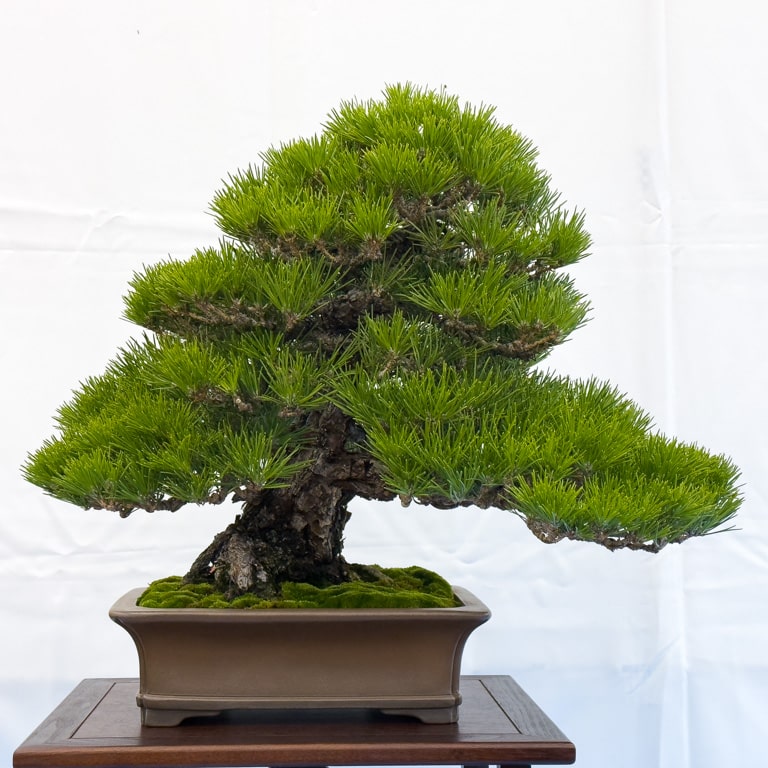
Black pine
(The apex, the trunk, and the key branch all flow to the right)
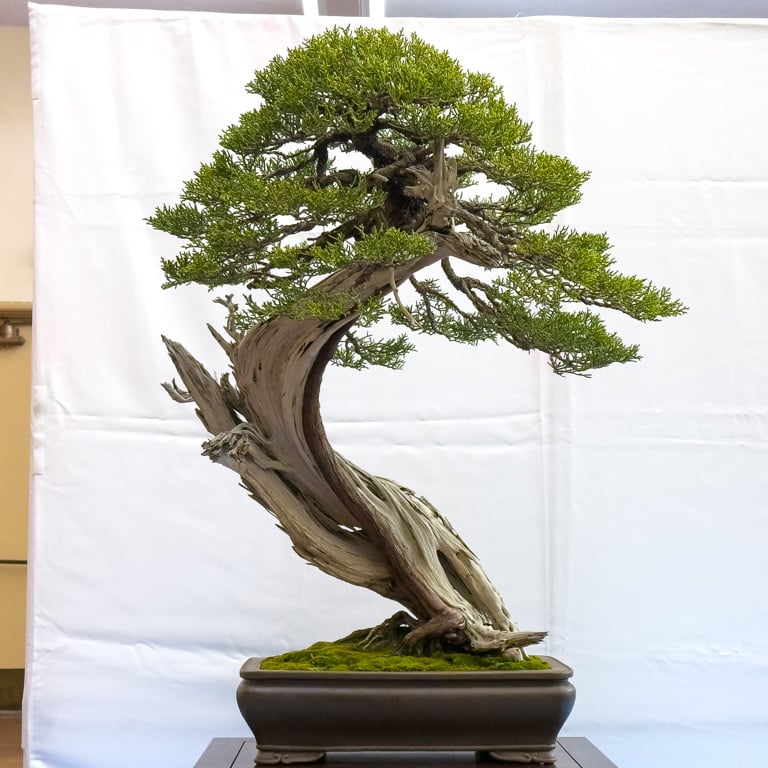
California juniper
(This tree has more complex flow – the trunk and apex flow left but the longest branches are on the right side of the tree)
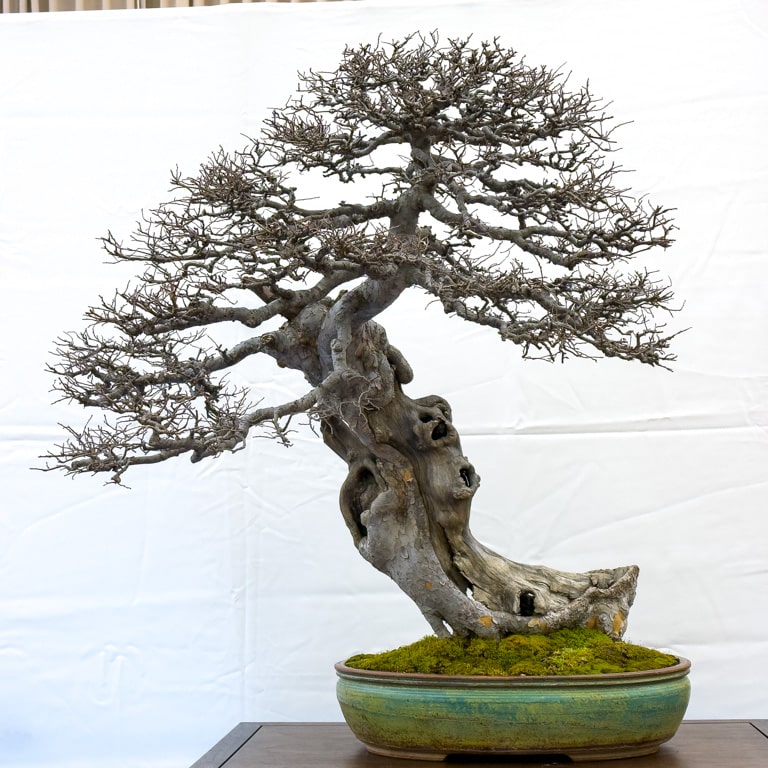
Chinese elm
(This tree also has complex flow – the trunk and lowest branch flow left and the apex flows to the right)

Coast redwood
(This formal upright bonsai doesn’t provide strong flow indicators, but the lowest branch on the left suggests subtle flow to the left)
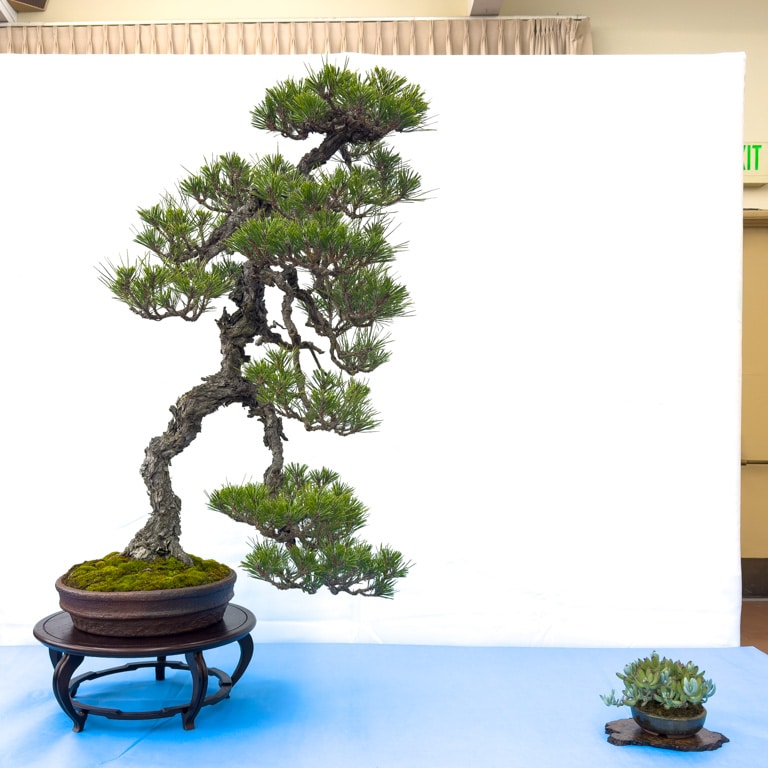
Cork bark black pine
(The thickness of the trunk can inform the density of the foliage; in this case, the slender trunk suggests a design with relatively sparse branching)
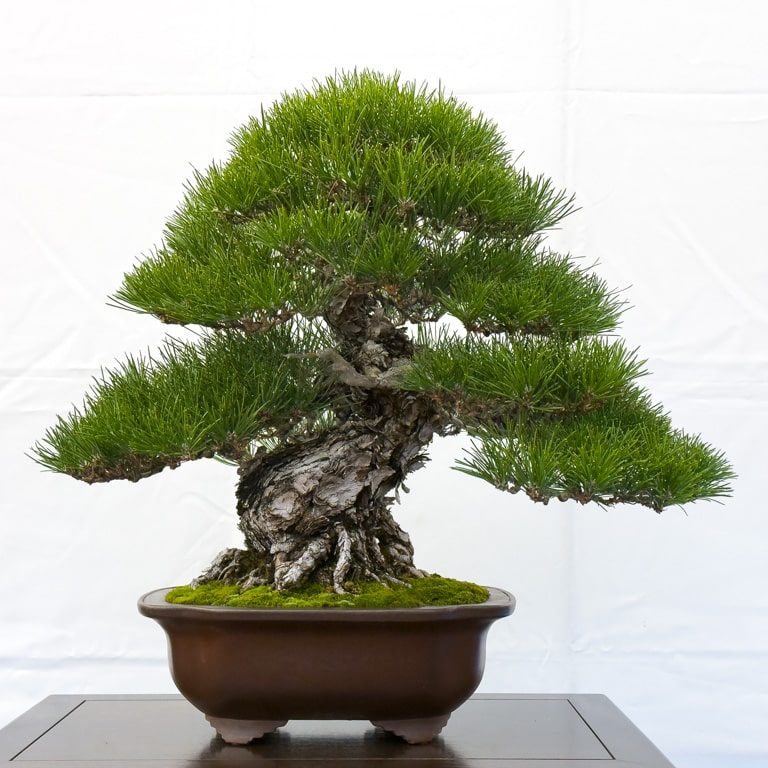
Black pine
(The large trunk suggests a design with much more dense branches than the cork bark pine above)
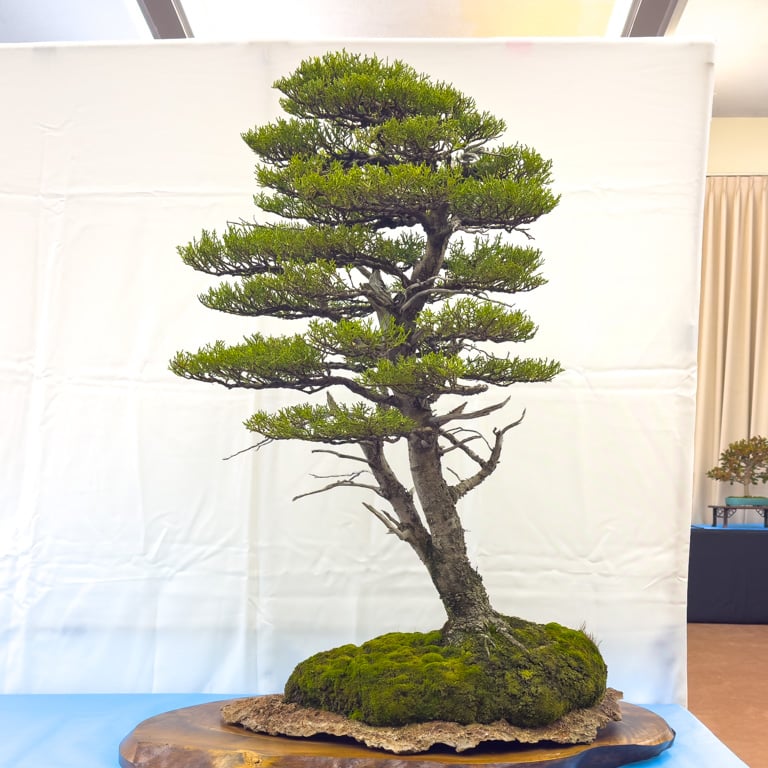
Monterey cypress
(Slender trunk with spaces between the branches; the horizontal form of the pads suggests a tree growing in a windy environment)
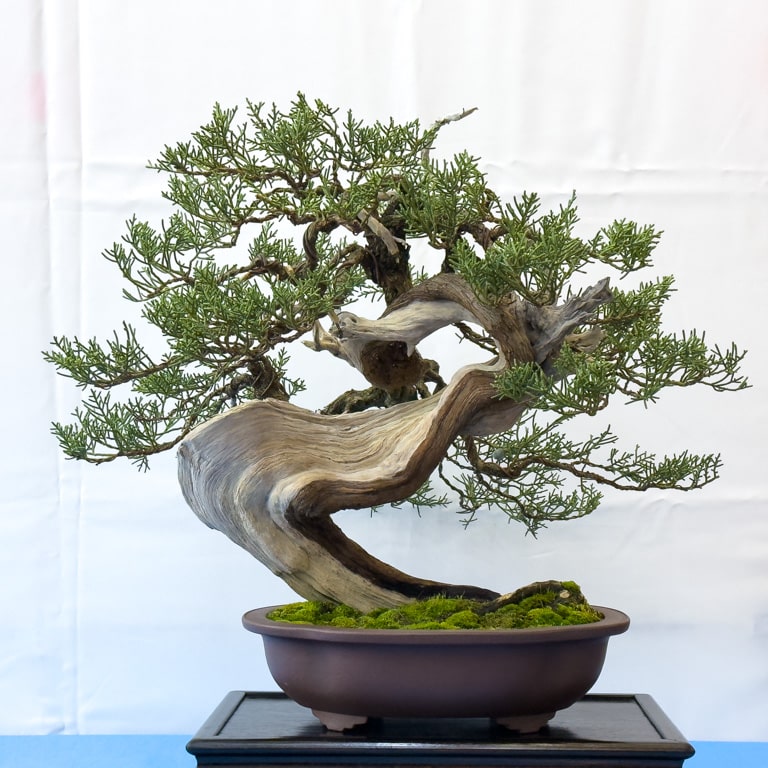
California juniper
(Although the branches are in an early stage of development, the apex and key branches clearly convey movement to the left, taking a cue from the movement in the lower part of the trunk)
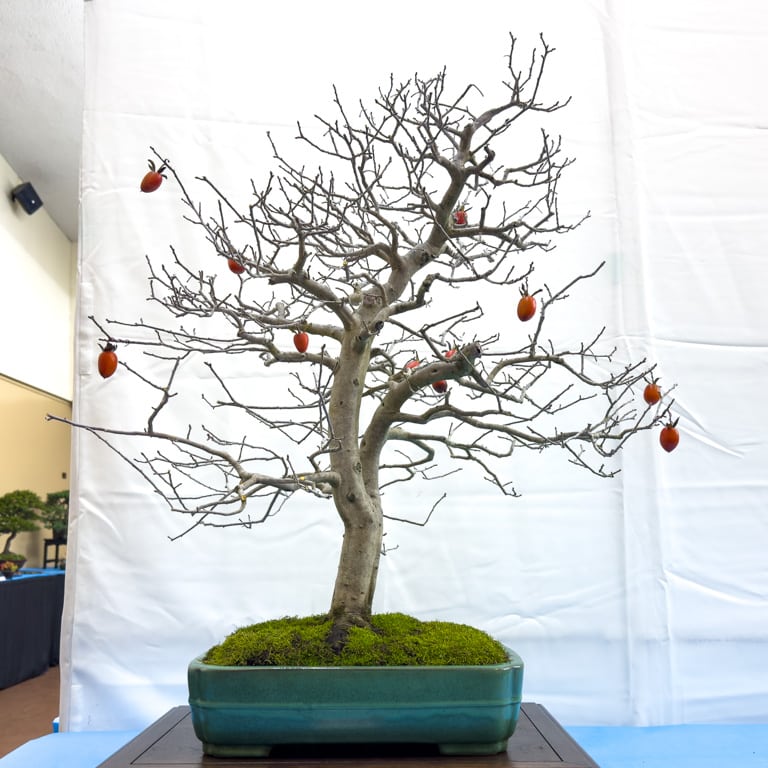
Princess persimmon
(The small number of fruit do a great job conveying late winter)

Shore juniper
(The movement in the middle portion of the trunk and the shape of the apex suggest movement to the left)
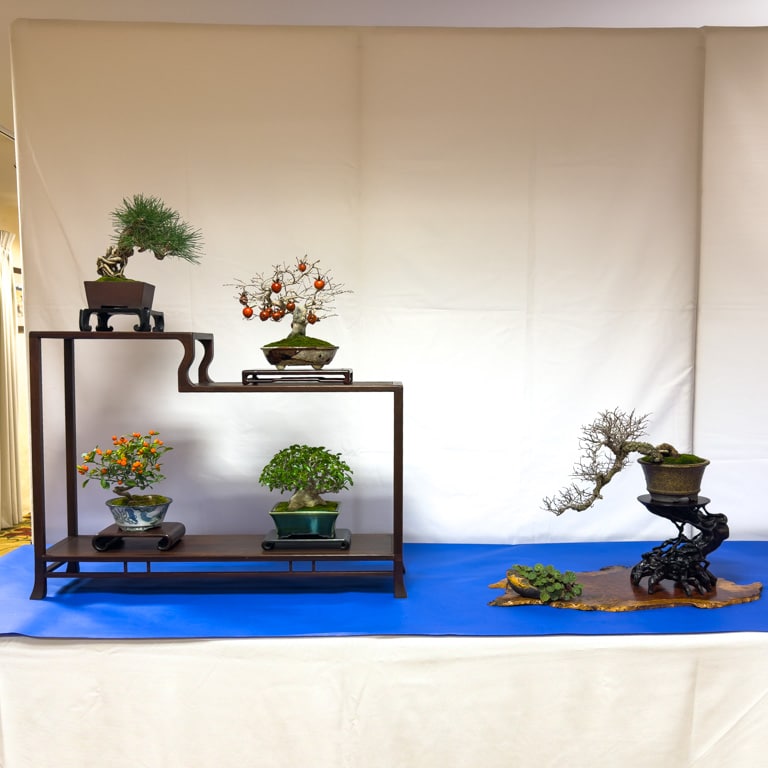
Five-tree shohin display
(A good mix and arrangement of deciduous, coniferous, and broadleaf evegreen species)

Shohin black pine display
(Repeating design elements can tell a very different story than the conventional approach of mixing species and styles; novel or non-traditional displays like this offer a great opportunity to think through design considerations relating to balance and flow)
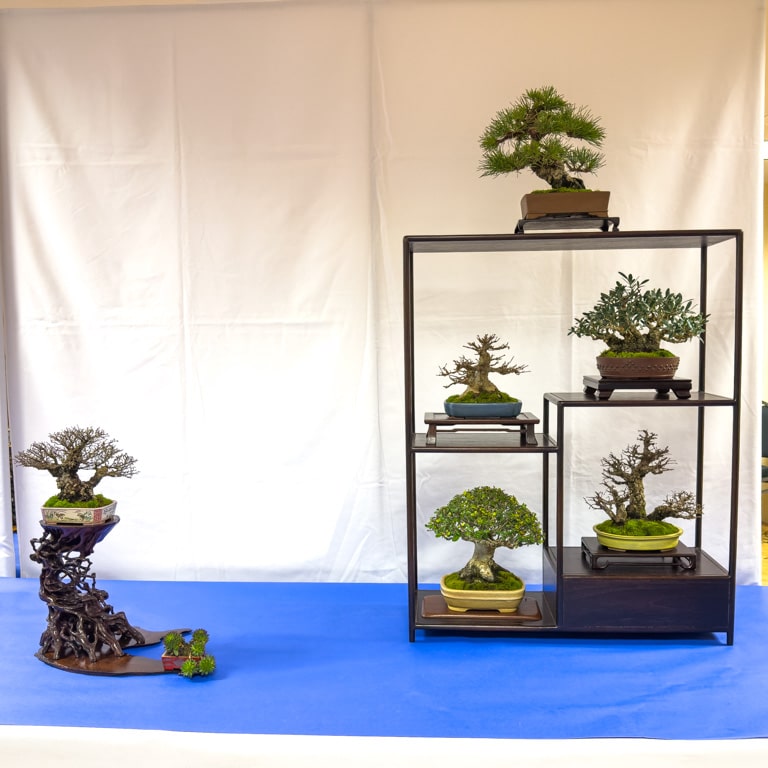
Seven-point shohin display
(All of the trees are displayed at different heights to give the display a more dynamic feeling)
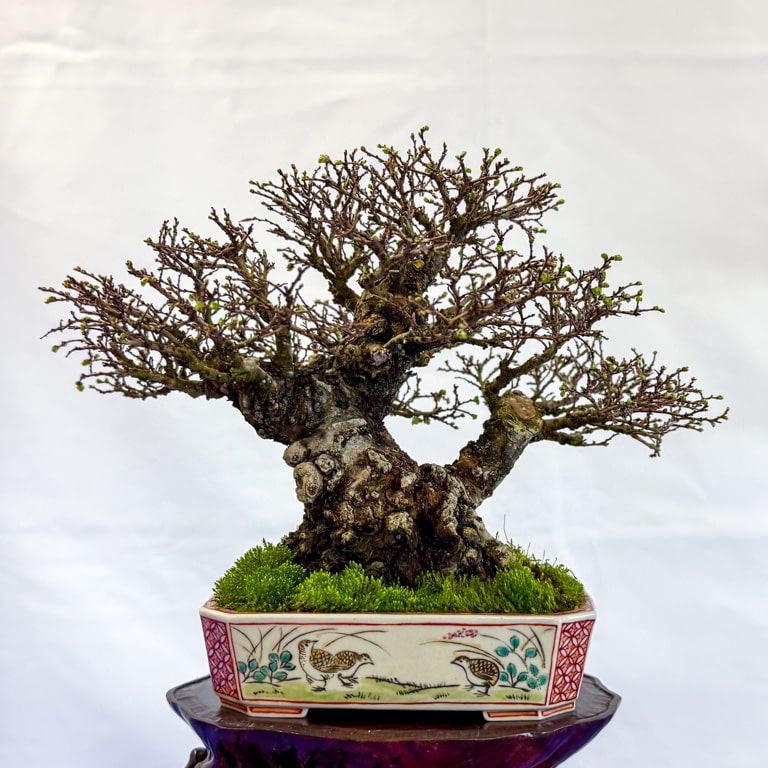
Corkbark elm
(A beautiful shohin that indicates movement to the left)
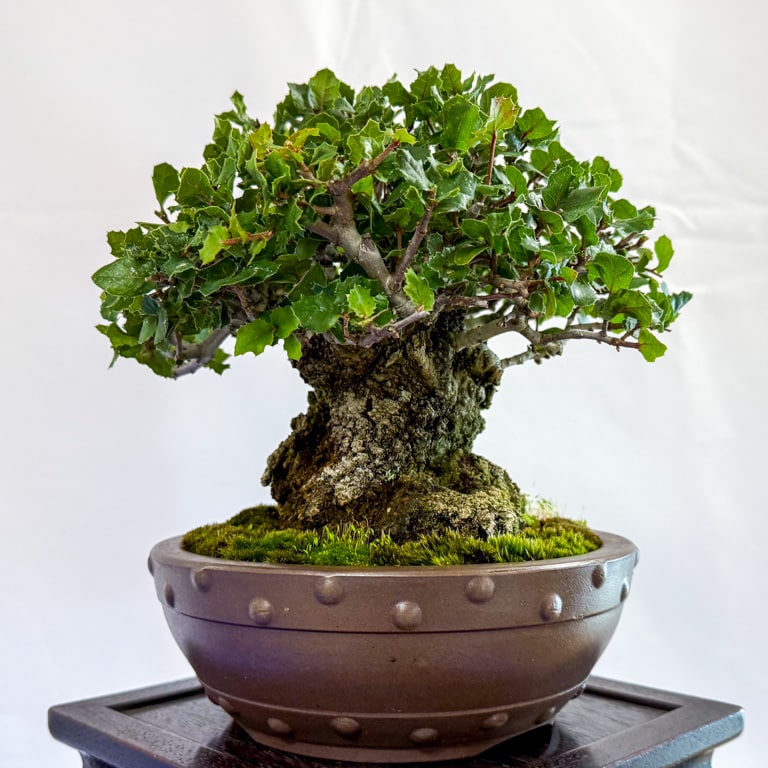
Scrub oak
(The sturdy trunk and small leaves suggest a much bigger tree)
News & Updates
- The Bonsai-A-Thon is this weekend! Come to the Huntington for two days of demonstrations, raffles, and plant sales to raise money for the collection. I’ll be doing a program on deciduous bonsai Saturday and a pine program and demo on Sunday (lectures run from 11:00-2:00 both days). Get the full schedule at the Huntington website.
- The Mammoth Fundraiser is next weekend! The auction will be held Saturday at 1:00 (preview at 12:00) – you can browse the catalog online here. Sunday features sales items and vendors – I’ll have tools, supplies and akadama on hand. Learn more at the event website.
- Bonsai Empire – new course featuring Masahiko Kimura. The same team that produced online courses with Bjorn Bjorholm and Michael Hagedorn has just released a new course in which Kimura demonstrates his techniques for black pine and hinoki. From the course description:
The world-renowned Bonsai master is back in his workshop, to teach and share his wealth of knowledge with us. It was Mr. Kimura himself who created the curriculum, and hand-picked the trees to demonstrate his techniques on. A spectacular Masterclass full of advanced, practical knowledge awaits you!
Topics covered in this Masterclass include the drastic redesign of an old Pine, extreme bending and complex repotting. But transformational techniques is not all, as mr. Kimura also picked a stunning Hinoki cypress to teach the important subject of refinement on. He prepared the tree for the Kokufu-ten, which was a unique opportunity to teach pad creation, apex design and timing.
View sample videos and get access to the course at Bonsai Empire.
Kimura in the workshop
Subscribe to Bonsai Tonight
New Posts Delivered Every Tuesday and Friday
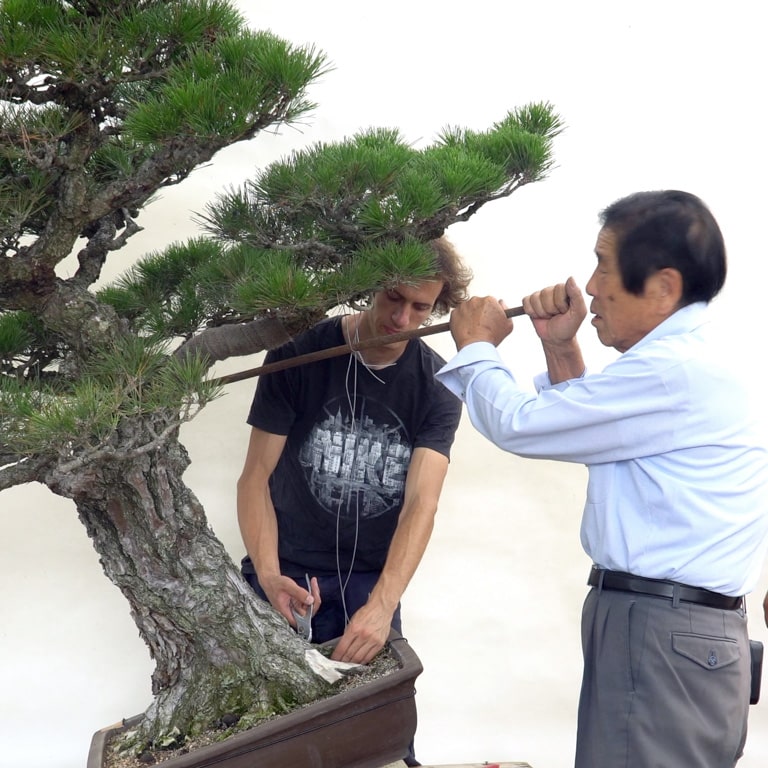
John Schmied says
Really nice write up featuring basic elements of design Jonas!